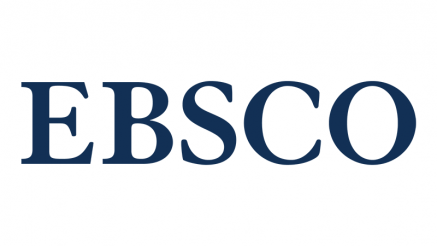Obtaining Insights from a Natural Language Processing Model for Naming Academic Programs in Higher Education
DOI:
https://doi.org/10.14482/inde.42.02.528.748Keywords:
Academic programs Design, Insights generation, Natural Language Processing, Visualization approachAbstract
Natural Language Processing (NLP) is recognized as essential in Artificial Intelligence for the interaction between computers and humans. In this article, the use of NLP and visualization techniques in the creation of a model for insights acquisition in the design of new academic programs was explored. The quantitative methodology use techniques such as tokenization and TextRank, and with the support of the Scattertext Plot, discriminate categories on doctoral programs in information technologies. This methodology, validated by experts and widely used, highlighted particularities, general knowledge, and emerging trends in the compared programs. The results identify four essential quadrants for decision-making in program design, and shows current and future needs in program naming. In conclusion, the study underscores the importance of NLP in contemporary academic design and provides a robust tool for program designers.
References
D. A. Cueva Gaibor, “Transformación digital en la universidad actual”, Revista Conrado, vol. 16, núm. 77, pp. 483–489, dic. 2020.
M. L. Piñero Martín, E. R. Esteban Rivera, A. R. Rojas Cotrina, C. Becerra, y S. Fiorella, “Tendencias y desafíos de los programas de posgrado latinoamericanos en contextos de COVID-19”, Revista Venezolana de Gerencia (RVG), vol. 26, núm. 93, pp. 123–138, 2021.
MEN, “Creación de programas académicos. Ministerio de Educación Nacional”. Consultado: el 19 de junio de 2023. [En línea]. Disponible en: https://www.mineducacion.gov.co/portal/Educacion-superior/Sistema-de-Educacion-Superior/235796:Creacion-de-programas-academicos
G. Restrepo González, E. Castañeda Gómez, y D. Álzate G., “¿Tienen propuesta de valor las facultades y programas de Ingeniería en Colombia?”, Revista Ingeniería y Sociedad, vol. 8, pp. 49–57, 2014, Consultado: el 19 de junio de 2023. [En línea]. Disponible en: http://hdl.handle.net/10495/7740
T. Shaik et al., “A Review of the Trends and Challenges in Adopting Natural Language Processing Methods for Education Feedback Analysis”, IEEE Access, vol. 10, pp. 56720–56739, 2022, doi: 10.1109/ACCESS.2022.3177752.
Dhanasekaran K y Rajeswari R, “Insight into Information Extraction Method using Natural Language Processing Technique”, International Journal of Computer Science and Mobile Applications, vol. 1, núm. 5, pp. 97–109, 2013.
G. G. Chowdhury, “Natural Language Processing”, Annual Review of Information Science and Technology (ARIST), vol. 37, pp. 51–89, 2023.
K. R. Beesley, “Morphological analysis and generation: A first step in natural language processing”, en Computational Linguistic Tools for Morphology, Lexicon and Corpus Compilation , Julie Carson-Berndsen, Ed., SALTMIL Workshop at LREC, abr. 2004, pp. 1–8. Consultado: el 19 de junio de 2023. [En línea]. Disponible en: http://lrec.elra.info/proceedings/lrec2004/ws/ws2.pdf#page=7
B. , & B. I. P?tru?, “Syntactic Analysis. Lexical Disambiguation, Logical Formalisms, Discourse Theory, Bivalent Verbs”, en Natural Language Processing, Germany, Munich: AVM–Akademische Verlagsgemeinschaft München, 2012.
D. Hussen Maulud, S. R. M. Zeebaree, K. Jacksi, M. A. Mohammed Sadeeq, y K. Hussein Sharif, “State of Art for Semantic Analysis of Natural Language Processing”, Qubahan Academic Journal, vol. 1, núm. 2, pp. 21–28, mar. 2021, doi: 10.48161/qaj.v1n2a44.
Y. Li, M. a Thomas, y D. Liu, “From semantics to pragmatics: where IS can lead in Natural Language Processing (NLP) research”, European Journal of Information Systems, vol. 30, núm. 5, pp. 569–590, sep. 2021, doi: 10.1080/0960085X.2020.1816145.
M. Bayer, M.-A. Kaufhold, B. Buchhold, M. Keller, J. Dallmeyer, y C. Reuter, “Data augmentation in natural language processing: a novel text generation approach for long and short text classifiers”, International Journal of Machine Learning and Cybernetics, vol. 14, núm. 1, pp. 135–150, ene. 2023, doi: 10.1007/s13042-022-01553-3.
A. Rajput, “Natural Language Processing, Sentiment Analysis, and Clinical Analytics”, en Innovation in Health Informatics, Elsevier, 2020, pp. 79–97. doi: 10.1016/B978-0-12-819043-2.00003-4.
S. Singh, “Natural Language Processing for Information Extraction”, jul. 2018.
Y. Belinkov y J. Glass, “Analysis Methods in Neural Language Processing: A Survey”, Trans Assoc Comput Linguist, vol. 7, pp. 49–72, abr. 2019, doi: 10.1162/tacl_a_00254.
D. Khurana, A. Koli, K. Khatter, y S. Singh, “Natural language processing: state of the art, current trends and challenges”, Multimed Tools Appl, vol. 82, núm. 3, pp. 3713–3744, ene. 2023, doi: 10.1007/s11042-022-13428-4.
J. R. Grimmer, “Representational Style: The Central Role of Communication in Representation.”, Harvard University, 2010.
A. Schofield y Leo Mehr, “Gender-distinguishing features in film dialogue. In Proceedings of the Fifth Workshop on Computational Linguistics for Literature”, jun. 2016, pp. 32–39.
D. F. Calero, “Modelo basado en procesamiento de lenguaje natural para el diseño de programas académicos asistido por computador factor 1: denominación del programa”, [Proyecto de investigación]. Repositorio Institucional UNAD., Universidad Nacional Abierta y a Distancia, 2023. Consultado: el 14 de enero de 2024. [En línea]. Disponible en: https://repository.unad.edu.co/handle/10596/56948
J. S. Kessler, “Scattertext: a Browser-Based Tool for Visualizing how Corpora Differ”, mar. 2017.
P. Wulff, A. Westphal, L. Mientus, A. Nowak, y A. Borowski, “Enhancing writing analytics in science education research with machine learning and natural language processing—Formative assessment of science and non-science preservice teachers’ written reflections”, Front Educ (Lausanne), vol. 7, ene. 2023, doi: 10.3389/feduc.2022.1061461.
J. Richarz, S. Wegewitz, S. Henn, y D. Müller, “Graph-based research field analysis by the use of natural language processing: An overview of German energy research”, Technol Forecast Soc Change, vol. 186, p. 122139, ene. 2023, doi: 10.1016/j.techfore.2022.122139.
K. Zhao, N. Shi, Z. Sa, H.-X. Wang, C.-H. Lu, y X.-Y. Xu, “Text mining and analysis of treatise on febrile diseases based on natural language processing”, World J Tradit Chin Med, vol. 6, núm. 1, p. 67, 2020, doi: 10.4103/wjtcm.wjtcm_28_19.
S. Th. Gries, “Analyzing Dispersion”, en A Practical Handbook of Corpus Linguistics, Cham: Springer International Publishing, 2020, pp. 99–118. doi: 10.1007/978-3-030-46216-1_5.
S. Th. Gries, “What do (most of) our dispersion measures measure (most)? Dispersion?”, Journal of Second Language Studies, vol. 5, núm. 2, pp. 171–205, oct. 2022, doi: 10.1075/jsls.21029.gri.
D. F. Calero, “Base de datos con la información de los programas”. Consultado: el 19 de junio de 2023. [En línea]. Disponible en: https://docs.google.com/spreadsheets/d/1lf5j-Xss3f72rahj2Vb9dLiiIvnjQBh-/edit?usp=share_link&ouid=101796938056868559056&rtpof=true&sd=true
C. Mallick, A. K. Das, M. Dutta, A. K. Das, y A. Sarkar, “Graph-Based Text Summarization Using Modified TextRank”, 2019, pp. 137–146. doi: 10.1007/978-981-13-0514-6_14.
James Opacich, “Interpreting Scattertext: A seductive tool for plotting text”, Towards Data Science. Consultado: el 19 de junio de 2023. [En línea]. Disponible en: https://towardsdatascience.com/interpreting-scattertext-a-seductive-tool-for-plotting-text-2e94e5824858
Jason Kessler, “ScaterText”, https://github.com/JasonKessler/scattertext.
D. F. Calero, “ScatterText Plot dinámico”. Consultado: el 19 de junio de 2023. [En línea]. Disponible en: https://drive.google.com/file/d/1-3br2a4uZ3Wexc2-6MsV--GNT5ect6ZK/view?usp=share_link
Published
How to Cite
Issue
Section
License
Copyright (c) 2024 Revista Científica Ingeniería y Desarrollo.

This work is licensed under a Creative Commons Attribution-NonCommercial 4.0 International License.









